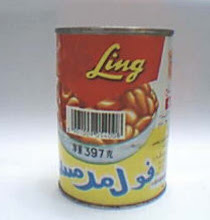This afternoon on the way home I took twenty minutes to take a few snaps along Reynard Street, West Coburg, an understated area with quite a concentration of small ghost signs, including the Robur Tea sign snapped a month or so ago. (I wonder why it had so many shops selling groceries? Was evidently quite the shopping centre in its day)
Down the end near Melville Road is the Gilmours Milk sign:
Further down, the Bushells Tea sign:
Further down the road, the branding of Lipton Tea on another old grocer's shop:
In between is the Robur Tea sign previously cited:
Space must have been fiercely contested by the tea companies, and loyalties protected, like football teams. From what people tell me who remember it, Robur was the cheap tea. I'm extrapolating (somewhat wildly) here that Liptons would have been the middle choice - reliable and solid. And Bushell's would have been the expensive, classier option. You can see this in (or read this into!) the signs: the Bushells signs were large and ornate, the Robur signs basic, prosaic and in smaller spaces. And Lipton, it seemed, owned their host (like the milk bars festooned with Cadbury's signs, as seen in the Lewis & Skinner records). This was unlike the others that took up side walls and odd spots.
So, more snaps on Reynard Street:
Next to the Lipton sign, the rest of an old Tarax window.
A covered sign a little way down the road, put there to frustrate sign nerds like me. And lastly:
One from the 1970s and/or 1980s, depicting newspapers and magazines and the other side of the Robur sign. As postulated in the last post, not quite as romance-inducing as the older signs, and therefore subject to the ghost sign 'law of age'?
One extra thing. I'm living through a time when my workplace is going through upheaval and uncertainty. Today, walking down Reynard Street with the afternoon autumn sun out, I realised that this exploration of dead worlds has been quite a source of comfort and succour of late, whether of the Aust Radio Productions story, the Lewis & Skinner records, or my ghost sign-driven urban wanderings in general. I think there are two things here: in an era of constant change, it's somehow comforting to see things that have simply been left alone to be - not revitalised, added to, transformed or augmented. Just left to lie and be. I love the city for its dynamism and movement, but also yearn at times for an anchoring constancy in my environment, and especially when change is all around.
Granted, the signs that are left are often the result of what can be seen as slackness or neglect over many years. But I resonate with that too, that element of unfinished business and letting things go, of not caring or wanting to 'make things better'. Sometimes things are fine as they are, and we may not see how fine for a long time. Perhaps here's the difference between the 'left alone' and the 'lovingly preserved' (see two posts back).















































